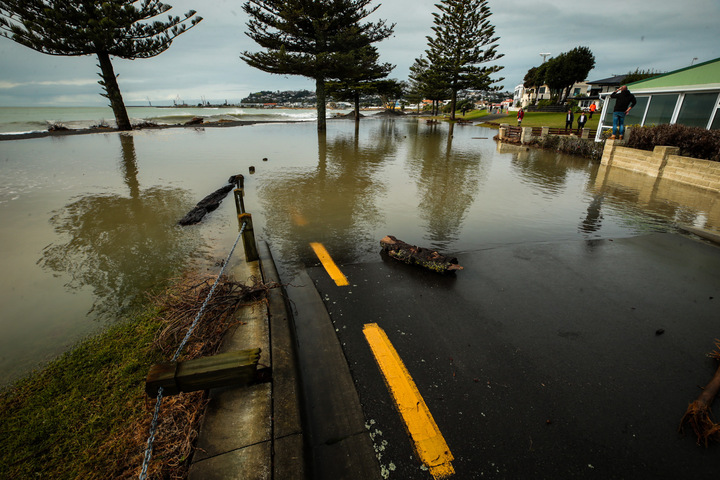Ko rua te paia ko Te Whanga, He Kainga to te ata. He Kainga ka awatea, He Kainga ka ahiahi e Tama e i.
Te Muriwai o Te Whanga
Te Muriwai o te whanga as defined in the settlement, encompasses both the Ahuriri estuary and its catchment areas. The term “Muriwai” translates directly to “end of water,” reflecting the significance and geographical features of the area.
He Kōrero Matua
Foreword
Tēnā tātou katoa
On behalf of Te Komiti Muriwai (Te Komiti) and Mana Ahuriri Trust, Te Komiti presents the Te Muriwai o TeWhangaPlan, a legislative masterplan born from the Ahuriri Hapū Claims Settlement Act 2021.
Te Whanganui-a-Orotu is a wāhi taonga in Mana Ahuriri’s Takiwā which represents the important history of our tūpuna/ancestors. TeWhanganui-a-Orotuthe “great harbourof Orotu“ is a site of profound cultural and historical importance. Named after TeOrotu, a descendant of Māhu Tapoanui, it once thrived with abundant resources. However mid-19th-century land sales and the 1931 earthquake led to its degradation.
The Waitangi Tribunal Claim in 1988 initiated our journey to restore the estuary’s mana. In 2016 Mana Ahuriri Trust was established culminating in the 2021 settlement. This settlement recognisedthe estuary’s significance and established TeKomiti Muriwai o TeWhangafor its management and protection.
As we embark on this journey to provide for our mokopuna/future generations we acknowledge the invaluable contributions of local authorities and community stakeholders and the 7 Ahuriri Hapū included in the redress; Ngāti Hinepare Ngāti Māhu Ngāti Matepū Ngāti Pārau (which includes Ngāi Tahu Ahi) Ngāi Tāwhao Ngāti Tū and Ngāi Te Ruruku.
Part B of the cultural redress acknowledged that the Crown recognised the role of the Hapū as the Kaitiaki of Te Muriwai o Te Whanga.
Our aspiration for this plan is to encourage a thriving healthy estuary that supports diverse ecosystems, whakapapa/lineage and community well-being. Mana Ahuriri prioritises te taiao and the wellbeing of our wai/waters and biodiversity, as we know that it will have significant and long-lasting benefits for our mokopuna. We want to see Te Whanga live up to the whakatauki:
Ko rua te paia ko Te Whanga. He kainga tō te ata. He kainga ka awatea. He kainga ka ahiahi. The Whanga is the storehouse that never closes. A meal in the morning. A meal at noon. A meal in the evening.
While we acknowledge that in the past this meant the abundance of kai, for our whānau today it represents sustenance for our people in terms of kai, environmental, economic, social, spiritual, historical and cultural wellbeing.
We urge all stakeholders and partners -government bodies, private sector entities, communities and individuals—to join us in implementing this master plan. The collective responsibility and commitment of all parties are crucial to achieving our shared objectives. We are confident that together we can overcome the challenges we face and enhance the well-being and sustainability of Te Whanganui-a-Orotu.
In conclusion, the Te Muriwai o Te Whanga Plan is a transformative blueprint for the future. Its successful implementation will shape a positive legacy fostering environmental health, cultural integrity and community resilience. We extend our heartfelt thanks to everyone involved in the planning process and look forward to the collaborative efforts ahead.
Te Kaha Kahaikirangi
Chair – Te Komiti Muriwai o te Whanga
He Whakarāpopototanga
Summary
Te Horopaki (Context)
- Ahuriri Hapū has profound whakapapa connections to Te Whanganui-a-Orotu, the Ahuriri Estuary. For Ahuriri Hapū, this estuary is culturally and spiritually significant, representing a crucial aspect of their identity.
- As Pākeha began to colonise Te Matau-a-Māui, much of the land surrounding Te Whangawas unfairly sold, or stolen. In 1860, the Crown developed the estuary for a harbour, disturbing wildlife and exploiting resources, diminishing the overall health of the estuary.
- The processes of drainage and reclamation after the 1931 Earthquake, combined with the diversion of the Tūtaekurī River outlet to the sea, reduced Te Whanganui-a-Orotuto a narrow tidal channel.
- In March of 2022 Ahuriri Hapū settled their Treaty of Waitangi Claim. The settlement legislation established a permanent estuary co-governance committee, Te Komiti Muriwai o Te Whanga(Te Komiti), tosafeguard and enrich Te Muriwai o Te Whanga(Ahuriri Estuary and its catchment areas)for present and future generations.
- Te Komiti is chaired by Mana Ahuriri Trust and comprises representatives from the DOC, HBRC, NCC, and HDC. Te Komiti oversees and coordinates management efforts for the estuary, providing guidance to local authorities and Crown agencies. Additionally, it has developed and will endorse a comprehensive management plan (this document) known as Te Muriwai o Te Whanga Plan.
Rautaki (Strategy)
- The vision for Te Muriwai o Te Whanga is ‘The health of Te Whanganui-a-Orotu supports environmental, economic, social, spiritual, historical, and cultural value for present and future generations.’This Rautaki is guided by the whakataukī:
Ko rua te paia ko Te Whanga.
He kainga tō te ata. He kainga ka awatea. He kainga ka ahiahi.
The Whanga is the storehouse that never closes.
A meal in the morning. A meal at noon. A meal in the evening.
- Te Komiti has core values for itself and all who give regard to the plan. These values are:
- Whanaungatanga (Relationships)
- Kaitiakitanga (Guardianship)
- Pono (Integrity)
- Whakapakari (Enhancement)
- Kotahitanga (Unity)
- Te Komiti has agreed that six pou will be the pillars of this Rautaki and it’s subsequent action plan. The base pou that are foundational to all other Te Whangaoutcomes, objectives, and initiatives are the pou associated with the taiao: Te Ora o te Wai (Water Health) and Te Mauri o te Taiao (Biodiversity).
- Through achieving the outcomes of these Pou, objectives for Aroā o Te Whanga(Historical / Educational) and Ahurea o te Whenua (Cultural / Spiritual) pou can be achieved. Following these is the achievement of Te Mahi Ohaoha (Economic) and Te Mahi Tūhono a Roopu(Social) pou.
- This Rautaki will support action by Te Komiti partners through the legislated ‘levers’. This will be for both regulatory functions through the Resource Management Act and subsequent resource planning documents, and non-regulatory functions through the Local Government Act and subsequent investment planning documents.
Mahi Tukanga (Process)
- Te Komiti partners have committed to a series of initiatives in line with the Rautaki of Te Muriwai o Te Whanga. These initiatives sit under each Pou in ‘focus areas’. Each focus area has a long-term indicator of success. These indicators provide a reference check to ensure current and future mahi continues to achieve the outcomes and overall vision outlined in the Rautaki.
- This initial action plan has 62 initiatives across the six pou.
- Te Komiti also wants to acknowledge the role of interested groups in forming this Plan. These groups have contributed21 initiativesand will be part of ongoing coordination, monitoring, and evaluation of the Plan through a working group.
Te Anga Whakamua (Moving Forward)
- Te Komiti will publish the Plan and share this within partner organisations, and wider with interested parties. Te Komiti will promote the plan, ensuring resource-management decision makers, potential funding partners, and others as required can give regard to the plan’s Rautaki. Te Komiti will also submit on consultations when this has not been the case.
- Te Komiti will work with a technical advisory group and working group to understand how initiatives are contributing to the indicators and outcomes outlined in this Rautaki and Action Plan. These groups will support development of future initiatives required and together with the working group and Te Komiti support monitoring, evaluation, and reviews as appropriate of this plan.
Defining the original landscape - pre 1840's
Te Whanganui -a-Orotu
“It is the vision of hapū that when they look over Te Pamū (the farm) and the wider Ahuriri Estuary that their eyes meet the sight of blooming kōwhai lining the main channel, and the streams, and waterways that flow into it. This will be a sign that the mauri of Te Whanganui-a-Orotu is restored.”
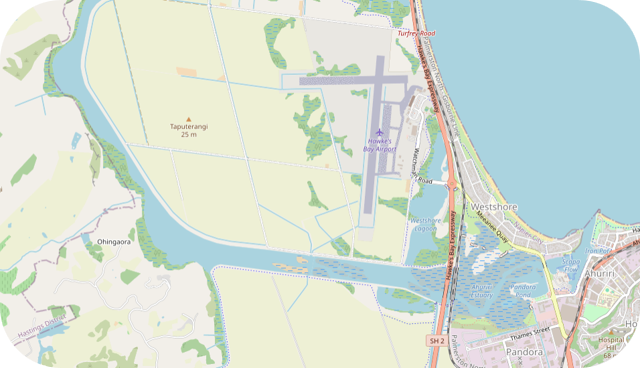
- Te Whanganui-a-Orotu, was once a flourishing body of water, supporting an extensive ecosystem. It was protected with mana by the people of the area. Te Whanganui-a-Orotutranslates to the ‘great harbour of Orotu’, symbolising the immense value of mahinga kai.
- It was abundant with shellfish beds and fishing spots, while the rivers and streams teemed with eels and freshwater fish. Recognised as a place of plenty for freshwater fish, shellfish, and birds, it was highly valued as a vital food source in the morning, at noon and in the evening.
- It is named after the ancestor Te Orotu, who was a descendant of the great explorer and ancestor Māhu Tapoanui, who is the very beginning of the Ahuriri Hapū. Te Whanganui-a-Orotucontained islands where Hapū lived and camped while on fishing expeditions, as well as wāhi tapu and urupā.
- The Tūtaekurī River was the most significant source of freshwater into Te Whanga, originating in the Kaweka Ranges and flowing southeast towards the coast. Named after an event 400 years ago, when Ngāti Kahungunu, led by Hikawera, faced starvation in the hills between Waiōhiki and Omāhu. Desperate, Hikawera ordered 70 kurī (dogs) to be sacrificed at Te Umukuri. The river got its name, Tūtaekurī, from the offal (tūtae) thrown into it during this event.This offal or (Tutae) was good for the eco-system ie: eels.
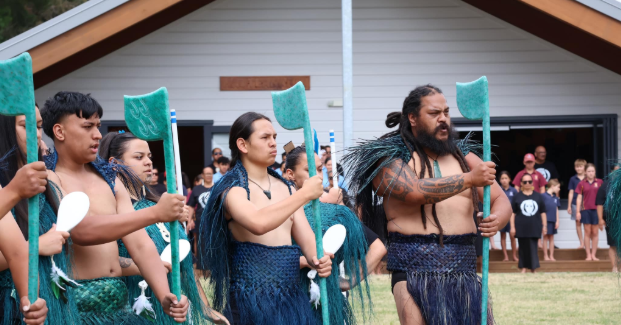
Whakapapa o te muriwai o te whanga - pre 1840
Cultural Significance
“This plan reflects our collective commitment to being kaitiaki and safeguarding the environmental, cultural and historical values of this wāhi taonga”
- Ahuriri Hapū, Ngāti Pāhauwera, and Maungaharuru–Tangitū, as Treaty settlement entities, share profound connections to Te Whanganui-a-Orotu, the Ahuriri Estuary. For Ahuriri Hapū, Te Muriwai o Te Whangais culturally and spiritually significant, representing a crucial aspect of their identity.
- Te Whangawas a source of nourishment for the tangata whenua and embodies the ancestral beginnings of Ahuriri people. The whakapapa of the Ahuriri hapū settlements is woven into their cultural narrative.
- Various hapū, including Ngāti Hinepare, Ngāti Māhu, Ngāti Matepū, Ngāti Pārau(including NgāiTahu Ahi), NgāiTāwhao, Ngāti Tū, and NgāiTe Ruruku, have contributed to the historical, cultural, and archaeological significance of Te Whanganui-a-Orotu.
Whakapapa o te muriwai o te whanga - 1840
Iwi Settlement in Ahuriri
“Ko rua te paia ko Te Whanga. He kainga tō te ata. He kainga ka awatea. He kainga ka ahiahi.
The Whanga is the storehouse that never closes. A meal in the morning. A meal at noon. A meal in the evening”
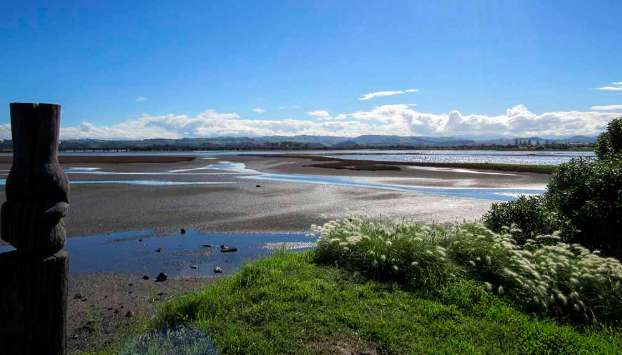
- Ahuriri hapū lived in settlements around Te Whanganui-a-Orotuand surrounding areas.
- The environment was utilised as a productive natural resource, from farming to horticulture practices. There was enough to share amongst everyone.
- Some Ahuriri Rangatira began to consider the advantages that might arise from the promotion of Pākehā settlement in the Ahuriri district and offered land to the crown for Pākehā settlement. This was the beginning of a catastrophic series of events at the expense of the natural state of the environment
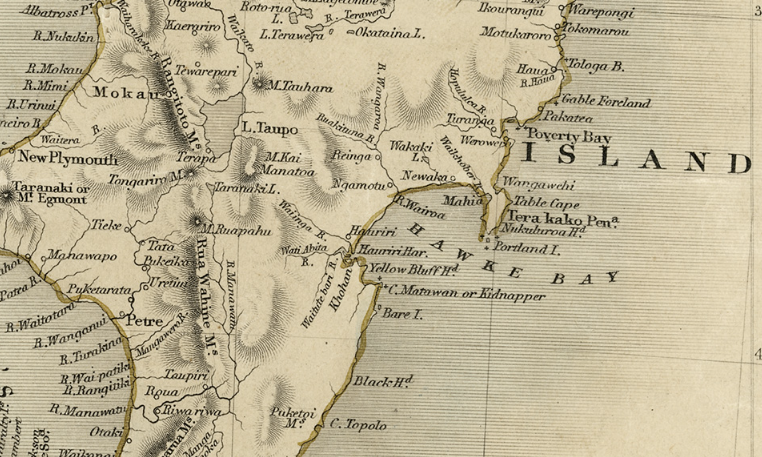
Whakapapa o te muriwai o te whanga
1850 - 1930
European Settlers
“The first round of negotiations for the Ahuriri Block took place on 20 December 1850, where some 500 Maori gathered to meet Donald McLean outside trader Ankatell’s house on the western spit (present Westshore) at Ahuriri.”
- In the 1850s, the Crown negotiated with Ahuriri Māori to buy their land at a low price, promising benefits. They purchased the land in 1851. This caused tensions among Hawke’s Bay Māori,but negotiations continued. In 1860, the Crown developed the estuary for a harbour, disturbing wildlife and exploiting resources, diminishing the overall health of the estuary.
- Five years later, new land laws allowed individual owners to sell their shares without consent, leading to settlers acquiring a significant amount of Ahuriri hapū land. By 1870the Crown and private parties had acquired approximately 51,000 acres of approximately 54,000 acres awarded to Ahuriri hapū individuals under the 10-owner rule. The Napier Harbour Board was established in 1874with no role for Ahuriri hapū. This further impacted the environment by using claimed land for urban and industrial development.
Impacts of te taiao on Te Whanga - 1931
Napier Earthquake
Te Muriwai o Te Whanga before (on the left) and after (on the right)

- Until the 1931 Hawke’s Bay Earthquake, most of the area was an inland sea from Pandora to Bayview. The earthquake lifted the area 1-2 metres, draining most of the water. This prompted legal complexities and land leasing for drainage and reclamation. This resulted in further residential, industrial, and recreational developments.
- The processes of drainage and reclamation, combined with the diversion of the Tūtaekurī River outlet to the sea, reduced Te Whanganui-a-Orotu(originally approximately 9,500 acres in area) to a narrow tidal channel.
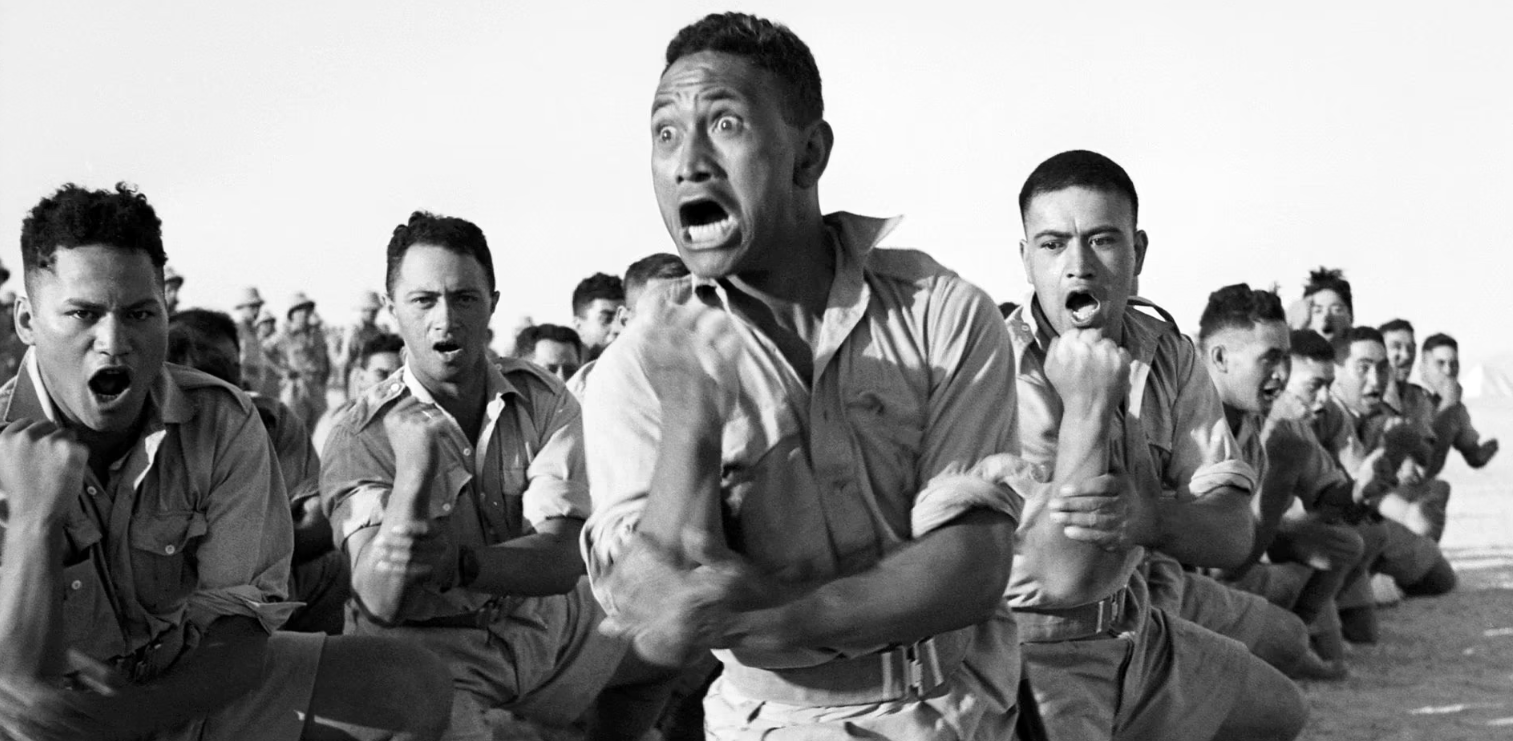
Impacts of te taiao on Te Whanga - 1945
World War II
“The war presented Māori with new opportunities to enter paid employment. Many migrated to the urban centres to fill positions in munitions factories and other essential industries. In 1936 just over 11% of Māori lived in urban areas; by 1951 the figure was closer to 23%.”
- Ahuriri Māori turned to waged employment, prompting a significant migration to urban areas that gradually eroded the foundations of traditional kāinga and pā communities. Unfortunately, these changes, coupled with the mounting pressures of modern society, led to a decline in the care and preservation of the estuary and its surrounding areas.
- The devastating impacts of the earthquake served as a catalyst, exacerbating the already dire environmental state of the estuary. In particular, the pollution from stormwater and sewage reached its peak during this period.
Significant events leading towards today 1988 - 2016
Settlement & Mana Restoration
The confirmed date from the Minister for Treaty of Waitangi Settlements, the Honorable Christopher Finlayson for the signing of our Agreement in Principle (AIP) was, 3:30pm on the 19th December 2013 in Wellington.

- In 1988 the Waitangi Tribunal Claimwas initiated in order tojustify breaches of TeTiritio Waitangi that the Crown has made and shown Māori to have suffered prejudices as a result.
- In 2009 Mana Ahuriri Incorporated gained the mandated support of the hapū to negotiate a claim.
- In 2010, the Crown acknowledged the Mana Ahuriri Incorporated mandate for negotiating comprehensive settlement of all Ahuriri hapū historical claims. This recognition led to the signing of an agreement in principle in 2013, which formed the foundation of the settlement, addressing all historical claims of the seven hapū predating 1992. The agreement acknowledges Crown breaches of TeTiritio Waitangi, resulting in hapū land loss and intergenerational distress. Redress includes a historical account, Crown apology, acknowledgment, and financial, commercial, and cultural redress.
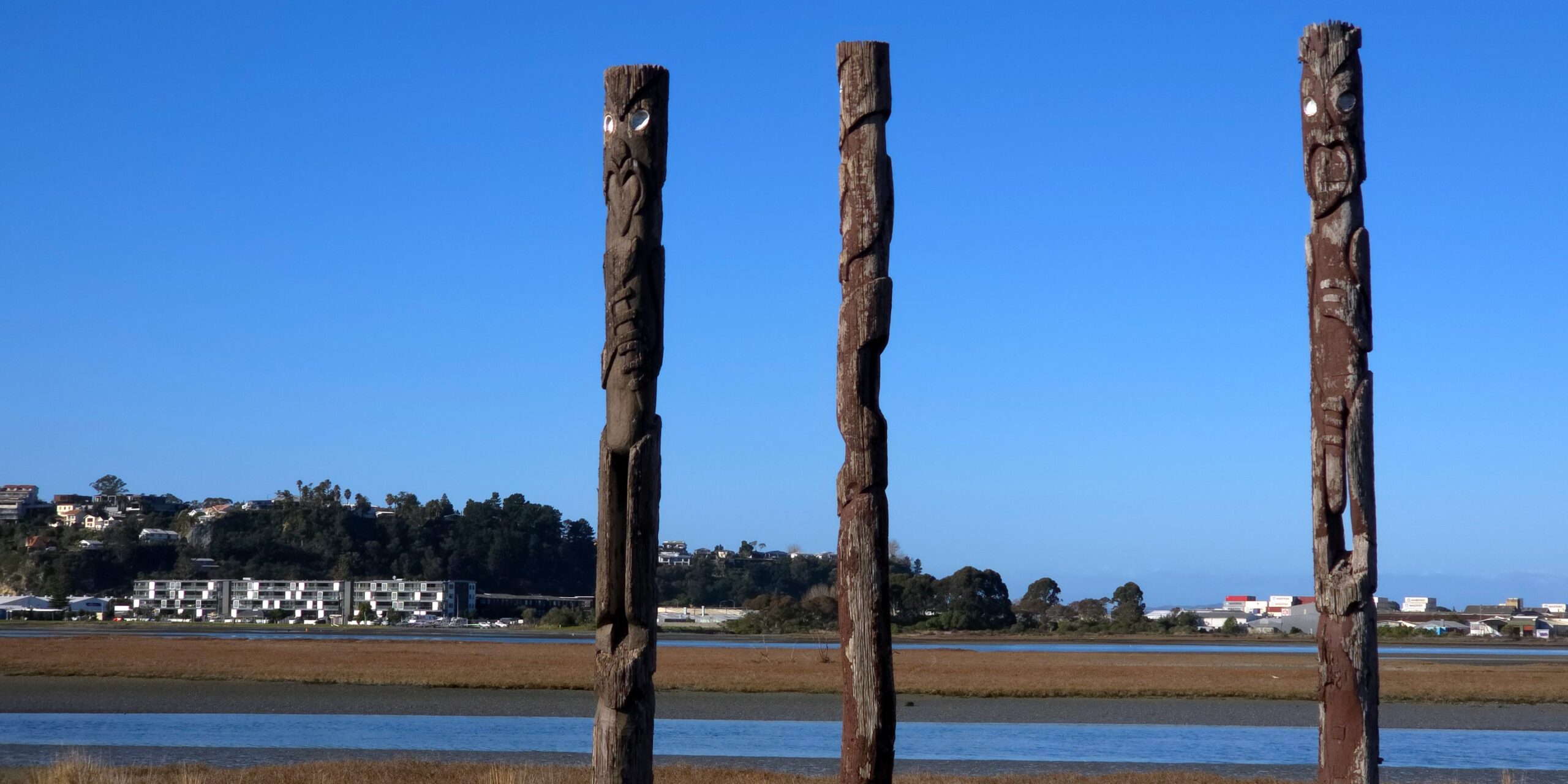
Significant events leading towards today 2016 - 2022
Establishment of Te Komiti
“This kaupapa has been shared with whānau and partners from the Te-Matau-a-Māui region and we wish to acknowledge their time and energy towards this mahi. We would like to acknowledge in particular, thefollowing organisationsthat participated in wānanga and hui towards the development of this plan.”
- In 2016, the establishment of the Mana Ahuriri Trust and the initialing of the Ahuriri Hapū Deed of Settlement provided Ahuriri Hapū with mana and control over estuary management and protection.
- 3 March 2021 was the official settlement date. The settlement legislation established a permanent estuary committee, Te Komiti Muriwai o Te Whanga, to safeguard and enrich the environmental, economic, social, spiritual, historical, and cultural values of Te Muriwai o Te Whanga(Ahuriri Estuary)for present and future generations.
- In 2019 the Ahuriri hapū claims settlement bill was introduced. The settlement includes $19.5 million worth of financial, commercial, and cultural restitution.
- The committee is chaired by Mana Ahuriri Trust and comprises representatives from DOC, HBRC, NCC, and HDC.Te Komiti Muriwai o Te Whangaoversees and coordinates management efforts for the estuary, providing guidance to local authorities and Crown agencies. Additionally, it will develop and endorse a comprehensive management plan (this document) known as Te Muriwai o Te Whanga Plan.
Significant events 2023
Cyclone Gabrielle
On 13 and 14 February, 2023 Cyclone Gabrielle caused extensive flooding and damage across Hawke’s Bay. This event resulted in a period of extreme vulnerability and damage to Ahuriri and the wider area. Te Muriwai o Te Whanga faced consequential change, from sewage contamination, considerable overflow of silt and devastating loss to the ecosystem. The local councils involved in the rehabilitation aimed to focus on reinstatement as opposed to development.
